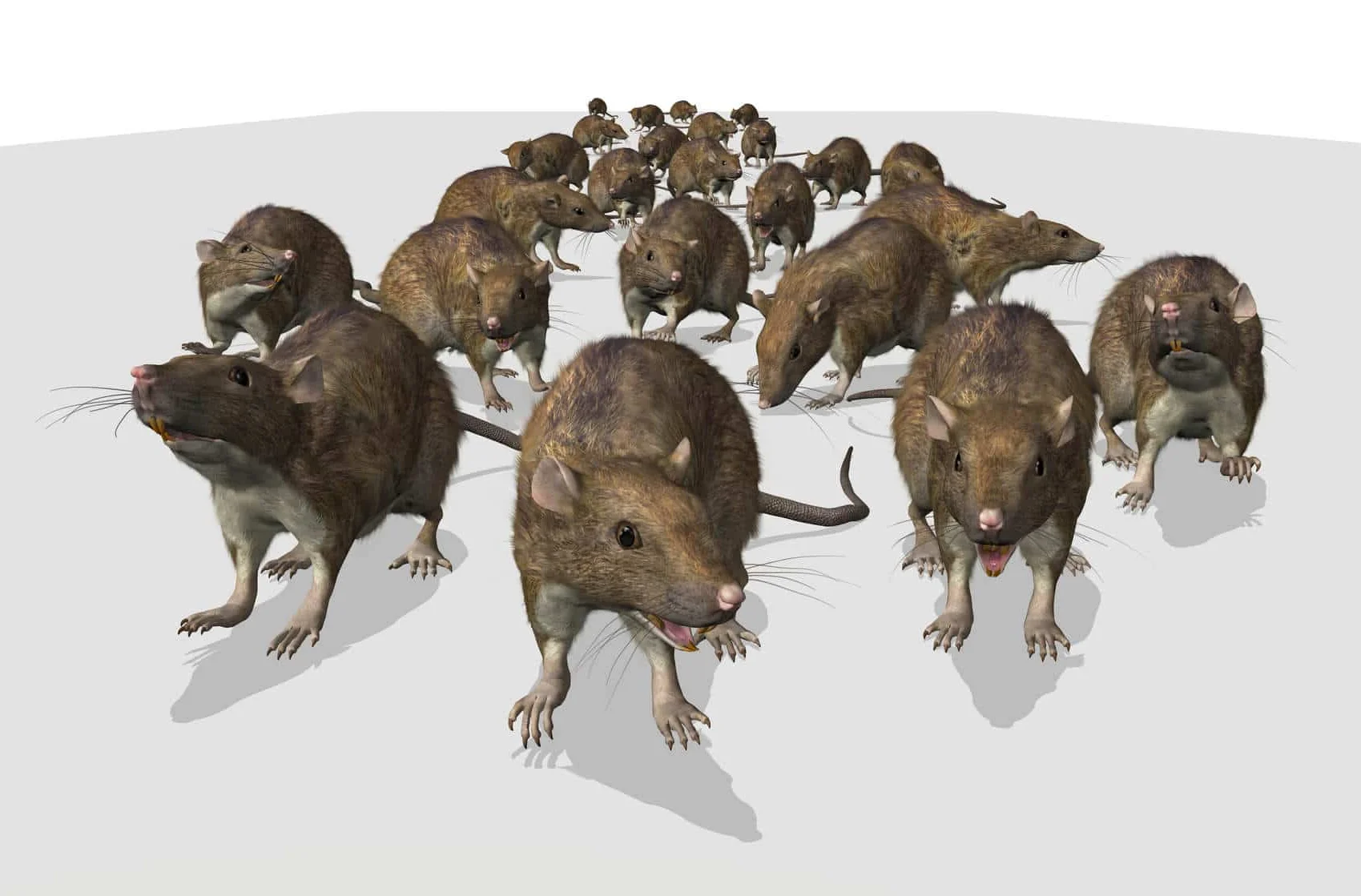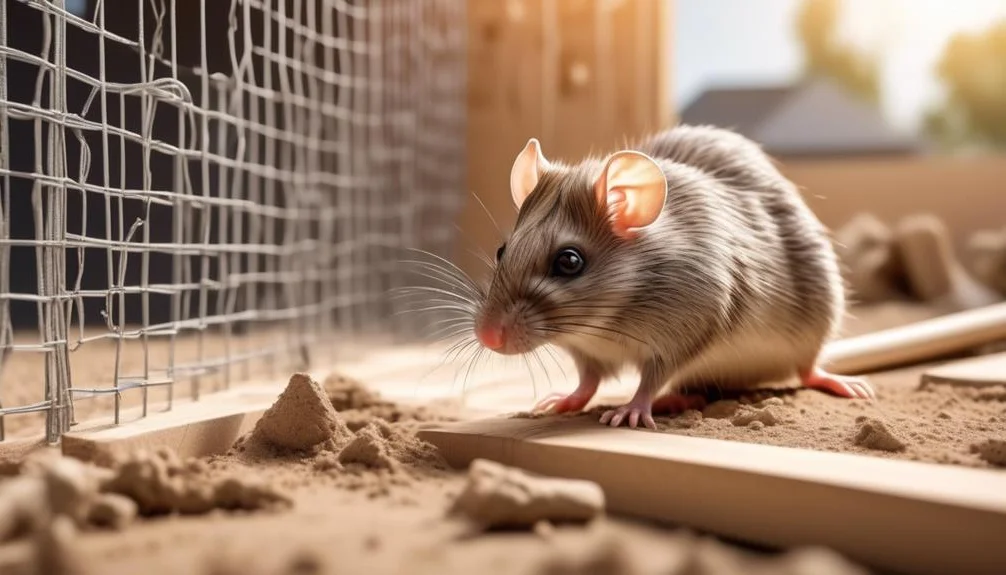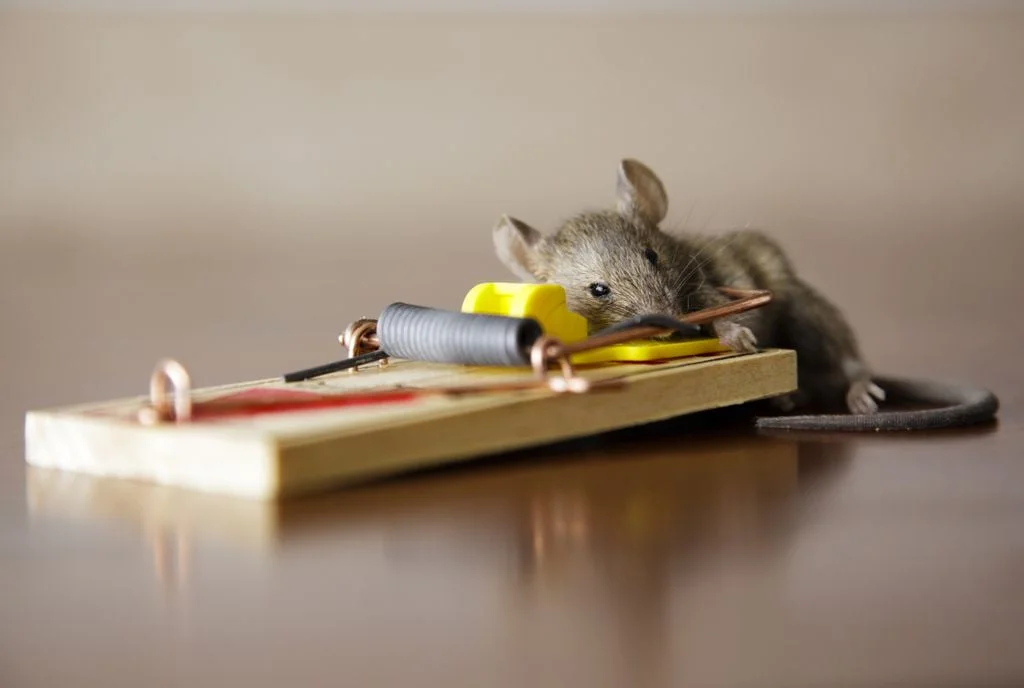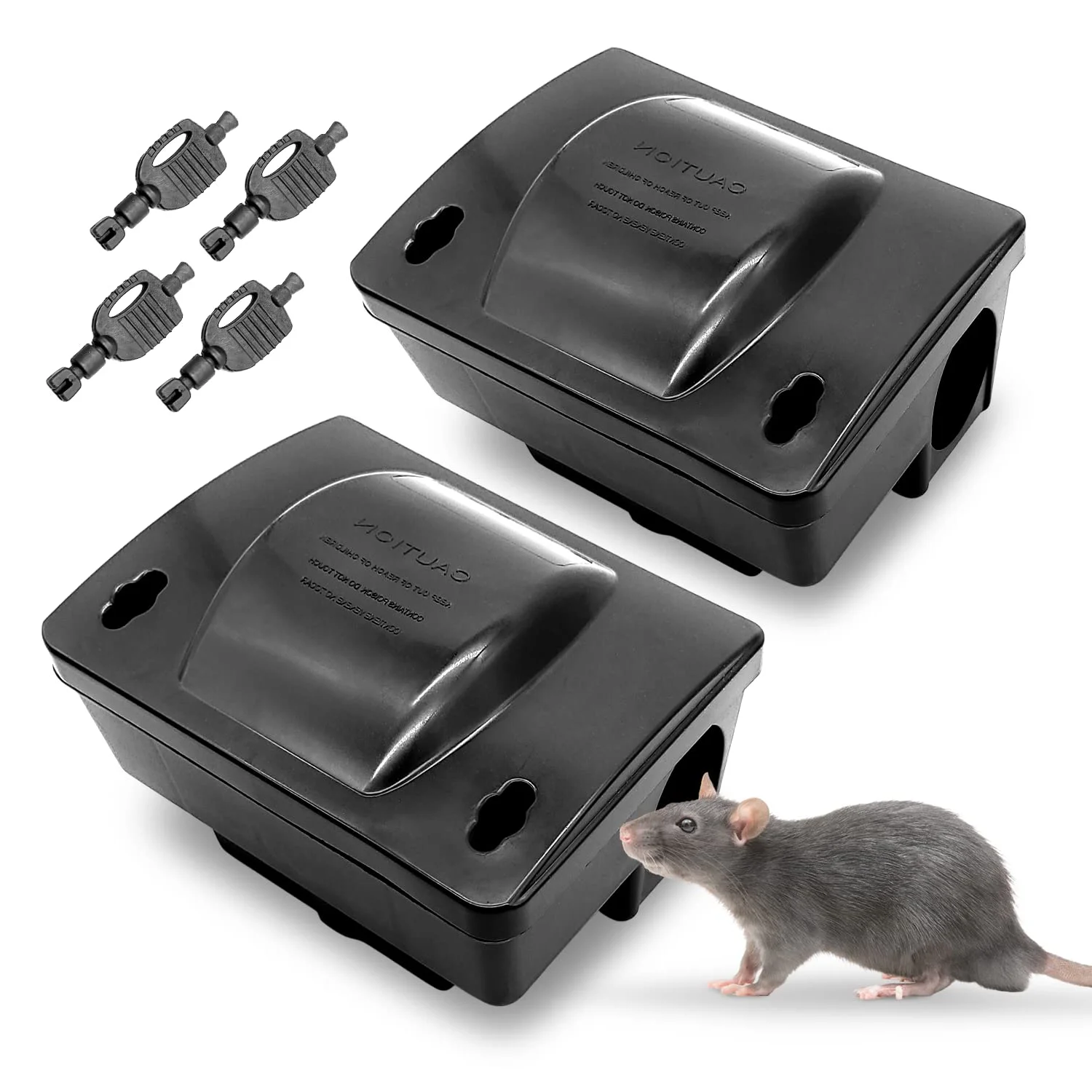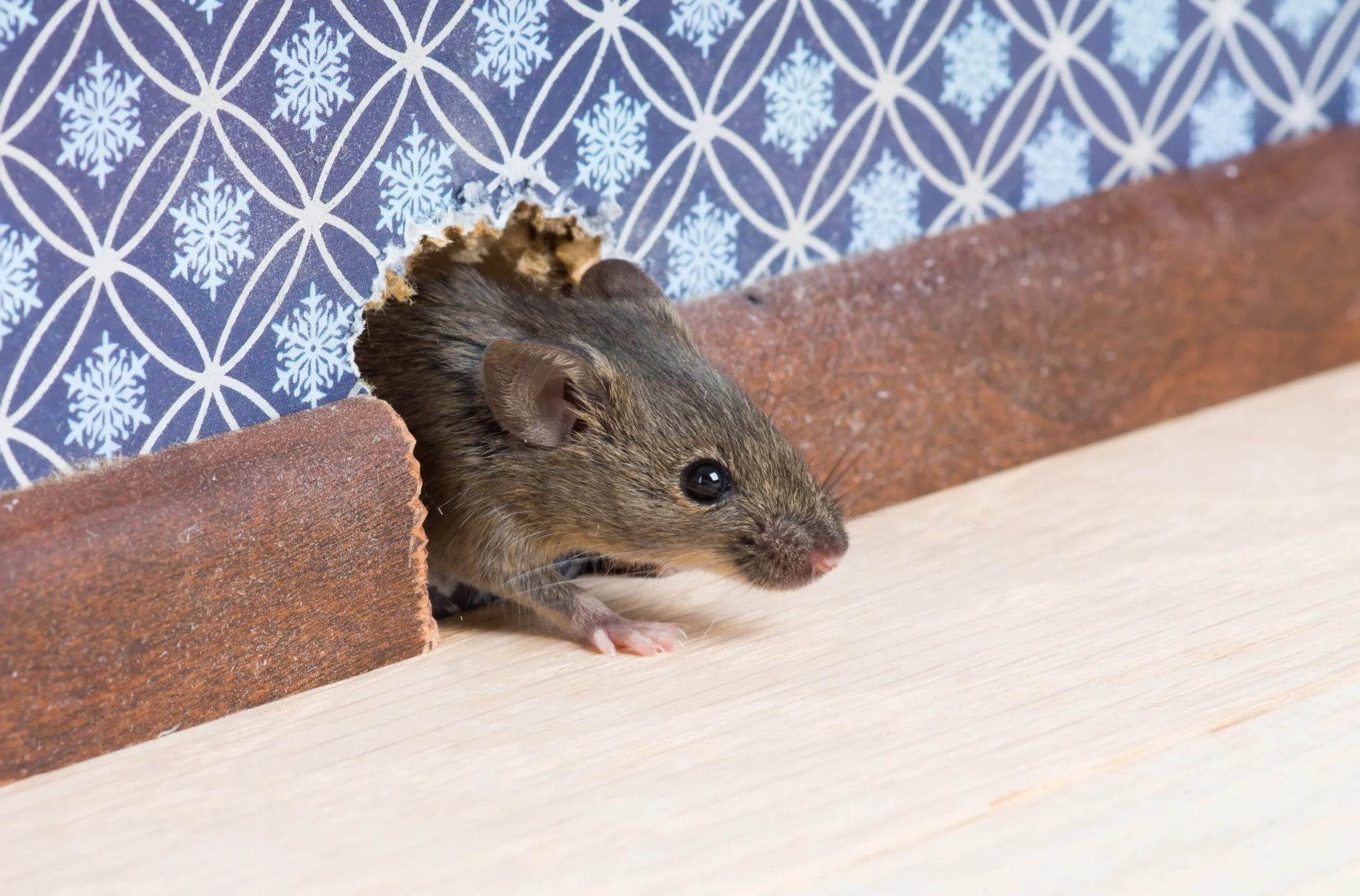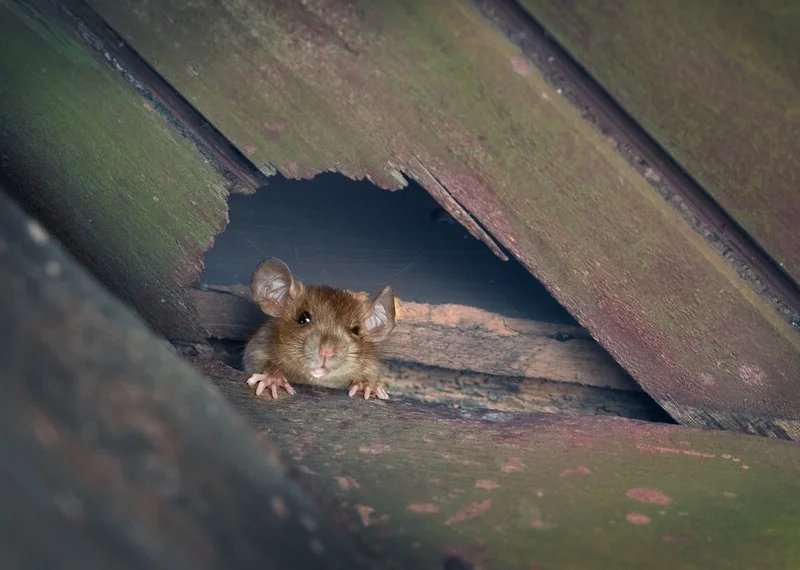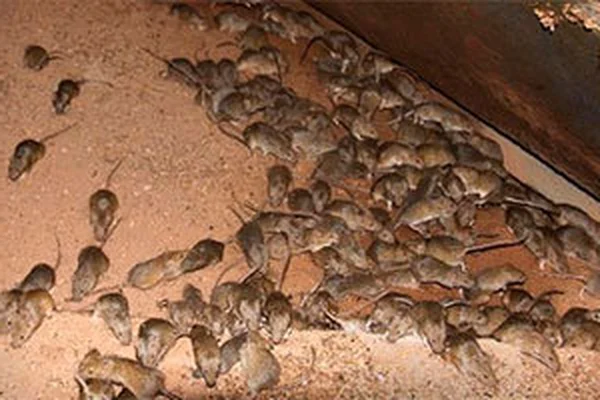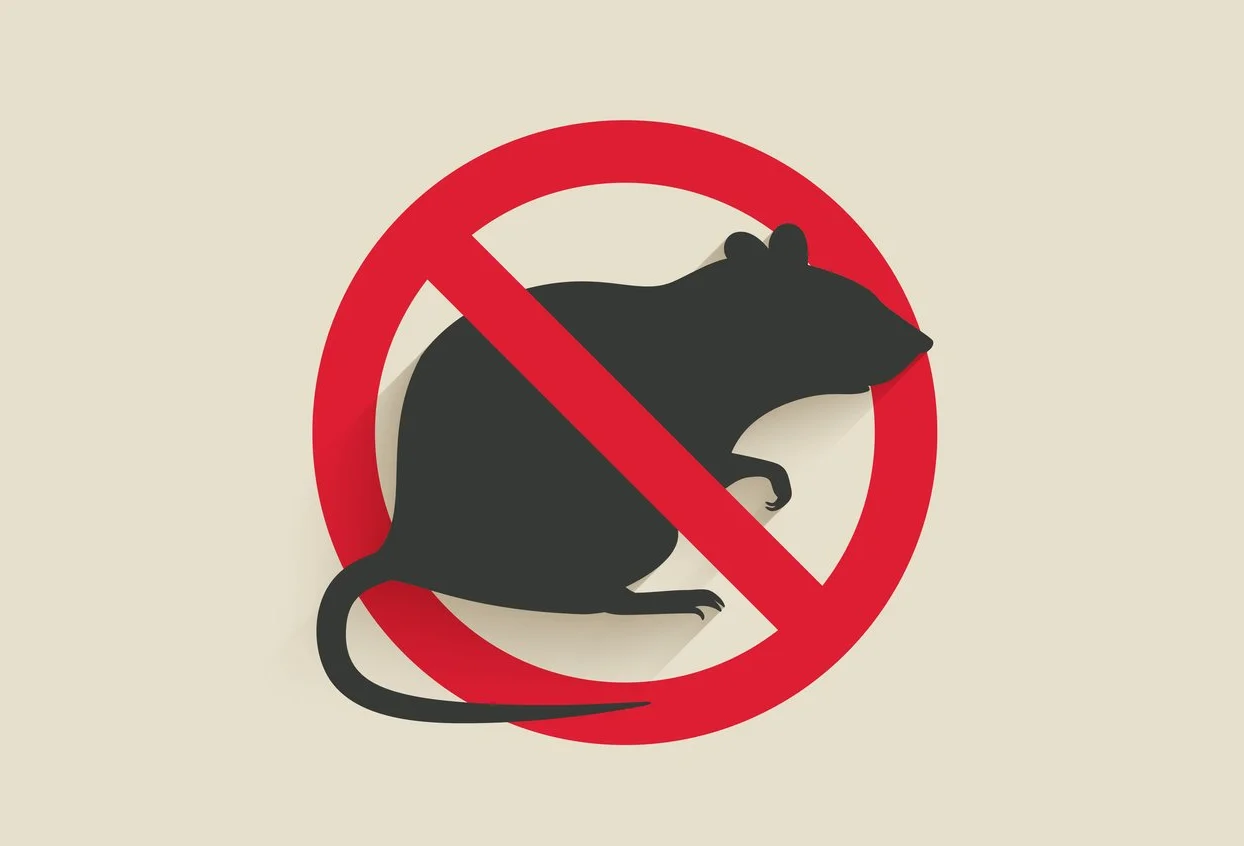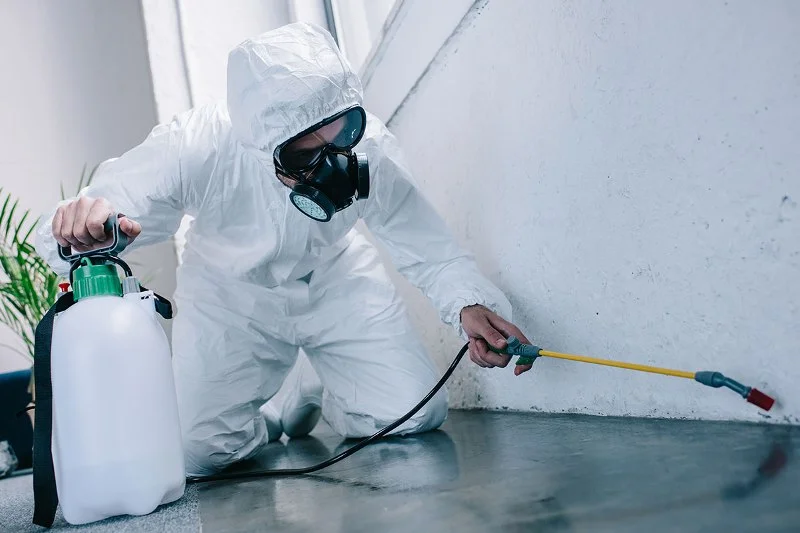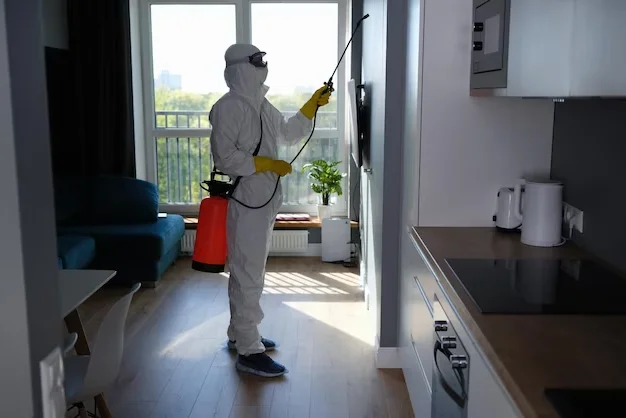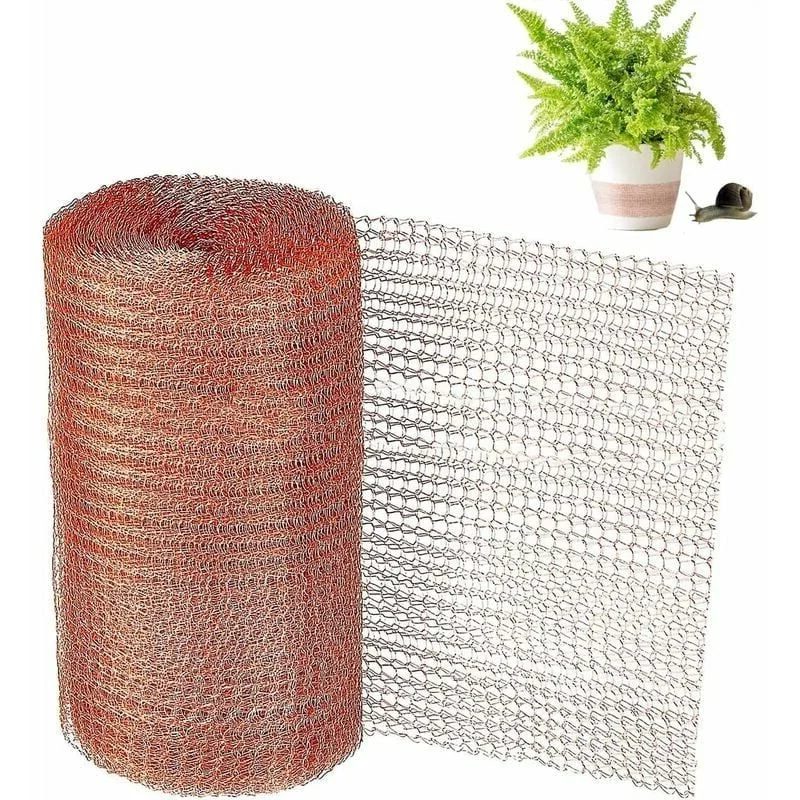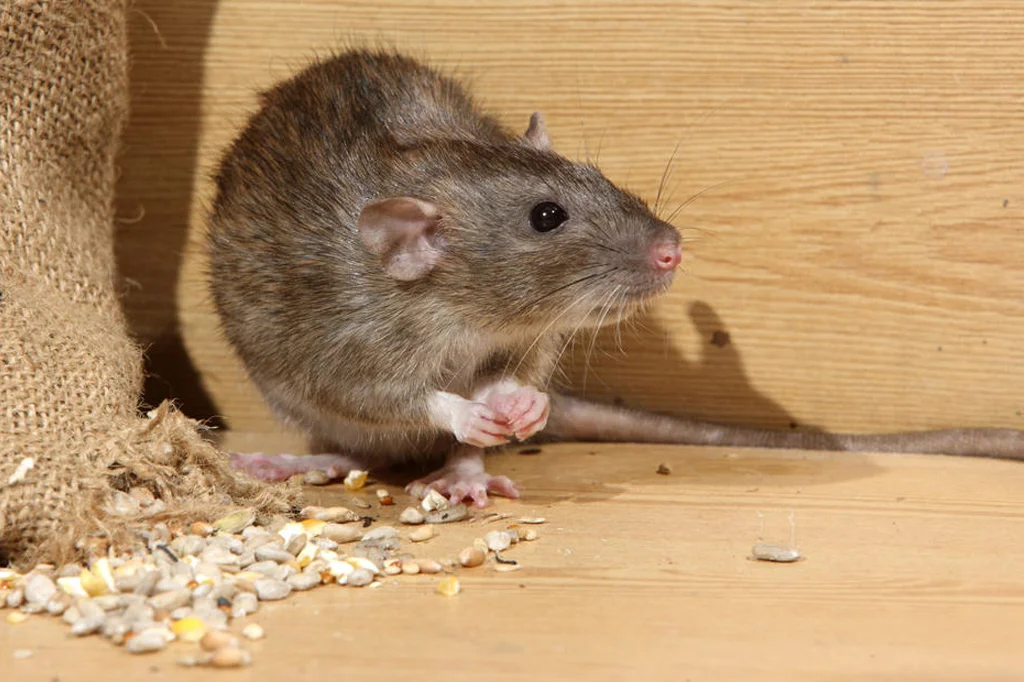Rodent infestations are among the most common and troublesome pest problems facing homes and businesses. More than just a nuisance, mice and rats can contaminate food, damage property, and transmit numerous diseases through their droppings, urine, and parasites. With remarkable adaptability, prolific reproductive rates, and ability to squeeze through incredibly small openings, these persistent pests create significant challenges for property owners.
This comprehensive guide provides detailed information about rodent identification, behavior patterns, health risks, and effective control methods. Whether you're dealing with a current infestation or want to prevent future problems, this resource will help you understand the threats these persistent pests pose and how professional rodent management can protect your property and health.
Concerned about rodents in your property? Our rodent control experts can identify entry points, eliminate current infestations, and prevent future problems.
Schedule your free rodent inspection today!
Common Rodent Pests
While numerous rodent species exist, these are the most common problematic species in residential and commercial settings:
House Mice
House mouse - the most common residential rodent pest
The house mouse (Mus musculus) is the most common rodent pest in the United States, particularly in residential settings.
Key Characteristics:
- Appearance: Small (2.5-4 inches long, excluding tail) with dusty gray to brown coloration, large ears, small eyes, and pointed snout
- Behavior: Primarily nocturnal but may be active during daylight in heavy infestations; excellent climbers; tend to nest within 30 feet of food sources
- Diet: Omnivorous but prefer grains and seeds; can survive on just 3-4 grams of food daily with minimal water
- Reproduction: Extremely prolific, with females producing 5-10 litters per year of 5-6 young each; reach sexual maturity at 6-8 weeks
- Lifespan: Typically 9-12 months in the wild
House mice are highly adaptable and can establish nests in virtually any protected location with access to food, often using shredded paper, fabric, or insulation as nesting material.
Norway Rats
Norway rats (Rattus norvegicus), also known as brown rats or sewer rats, are large, aggressive rodents common in urban and rural settings.
Key Characteristics:
- Appearance: Large (7-9.5 inches long, excluding tail) with brown to gray coloration, blunt snout, small ears, and tail shorter than head and body combined
- Behavior: Primarily ground-dwelling; excellent swimmers; typically nest in burrows alongside building foundations, under debris, or in lower portions of structures
- Diet: Omnivorous with a preference for meats, fish, and grains; consume about 1 ounce of food daily and require regular water access
- Reproduction: Females produce 4-7 litters per year of 8-12 young each; reach sexual maturity at 3-5 months
- Lifespan: Typically 9-12 months in the wild, though some may live up to 18 months
Norway rats are known for their destructive gnawing habits and tendency to establish complex burrow systems near buildings. They're excellent swimmers and can enter structures through sewer lines.
Norway rat - commonly found near building foundations
Roof Rats
Roof rat - typically found in upper portions of structures
Roof rats (Rattus rattus), also known as black rats or ship rats, are sleeker and more agile than Norway rats.
Key Characteristics:
- Appearance: Medium-sized (6-8 inches long, excluding tail) with slender build, dark brown to black coloration, pointed snout, large ears, and tail longer than head and body combined
- Behavior: Excellent climbers preferring elevated locations; typically nest in upper portions of structures like attics, rafters, and tree canopies
- Diet: Omnivorous with a preference for fruits, nuts, and berries; require less water than Norway rats
- Reproduction: Females produce 4-6 litters per year of 6-8 young each; reach sexual maturity at 2-3 months
- Lifespan: Typically 9-12 months in the wild
Roof rats are particularly common in coastal and southern regions, though their range has expanded. Their excellent climbing ability allows them to access buildings via tree branches, power lines, and even by climbing up exterior walls.
Other Rodent Pests
Depending on your location, you may encounter other rodent species:
-
Deer Mice: Common in rural areas; primary carriers of hantavirus; distinguished by white underbelly and feet
-
Voles: Small, stocky rodents that primarily damage gardens and landscaping with their surface runways and burrows
-
Squirrels: May enter attics and wall voids, causing damage to insulation and wiring
-
Woodrats: Also called packrats; known for collecting shiny objects and creating large, messy nests
Regional Rodent Variations
Rodent problems vary by region and property type. Urban settings typically face more issues with house mice and Norway rats, while rural properties may encounter deer mice and woodrats. Coastal and southern regions often deal with roof rats. Your local PestControl100 specialist can identify the specific rodent species in your area and recommend targeted control strategies.
Rodent Behavior & Biology
Understanding rodent behavior and biology is essential for effective control, as these factors influence their patterns, vulnerabilities, and control challenges:
Characteristic rodent gnaw marks around entry point
Physical Capabilities
Rodents possess remarkable physical adaptations that make them challenging to control:
- Exceptional Gnawing Ability: Continuously growing incisor teeth require constant gnawing; can chew through wood, plastic, soft metals, and even some concrete
- Flexible Skeletons: Can squeeze through incredibly small openings (mice need only 1/4 inch; rats about 1/2 inch)
- Excellent Climbing: Capable of scaling rough vertical surfaces; roof rats and mice can even travel upside down along wires and pipes
- Swimming Prowess: Particularly Norway rats, which can swim up to half a mile and tread water for days
- Jumping Ability: Mice can jump up to 12 inches vertically; rats can jump 3 feet vertically and 4 feet horizontally
These physical capabilities explain how rodents access seemingly secure structures and why comprehensive exclusion measures are essential for effective control.
Sensory Abilities
Rodents have highly developed senses that influence their behavior:
-
Superior Smell: Exceptional olfactory abilities allow detection of food sources and predator threats
-
Taste Caution: Ability to detect some toxins; may sample small amounts of new food before fully feeding
-
Touch Sensitivity: Specialized whiskers (vibrissae) and body hairs provide detailed environmental feedback
-
Poor Vision: Generally poor eyesight, though highly sensitive to motion
-
Acute Hearing: Can detect ultrasonic sounds beyond human hearing range
These sensory characteristics influence rodent trap placement, bait selection, and avoidance of control measures.
Behavioral Patterns
Rodents exhibit several distinctive behavioral traits:
- Neophobia: Natural wariness of new objects in their environment, making them initially cautious around traps and baits
- Established Pathways: Tend to travel along the same routes repeatedly, creating distinct runways along walls and baseboards
- Thigmotropism: Preference for maintaining body contact with vertical surfaces while traveling, influencing movement patterns
- Social Hierarchy: Particularly in rats, which establish complex dominance relationships within colonies
- Nocturnal Activity: Primarily active at night, though may become active during daylight in severe infestations
Understanding these behavioral patterns allows for strategic placement of control measures along natural travel paths and helps overcome initial trap avoidance.
Rodent rub marks along baseboard showing travel pathway
Reproductive Capacity
The remarkable reproductive capacity of rodents contributes significantly to control challenges:
-
Rapid Maturation: Reach reproductive age in just 6-8 weeks (mice) or 2-3 months (rats)
-
Frequent Breeding: Females can produce a new litter every 3-4 weeks under ideal conditions
-
Large Litters: Typically 5-12 offspring per litter, depending on species
-
Year-round Reproduction: While breeding peaks in spring and fall, reproduction occurs year-round in controlled environments
-
Exponential Growth: A single pair of mice can theoretically lead to over 2,000 descendants in a single year under ideal conditions
This exceptional reproductive capacity means that even a small number of rodents can quickly develop into a significant infestation if not promptly addressed.
Health & Property Risks
Rodent infestations pose numerous threats to both health and property, making control essential:
Rodent droppings in kitchen - a significant health hazard
Disease Transmission
Rodents can transmit numerous diseases to humans through various mechanisms:
- Direct Contact: Diseases transmitted through handling rodents or exposure to their urine, droppings, or saliva, including Leptospirosis, Hantavirus Pulmonary Syndrome, and Rat-bite Fever
- Food Contamination: Pathogens spread when rodents contaminate food or food preparation surfaces, including Salmonellosis and other bacterial infections
- Parasites: Fleas, ticks, and mites carried by rodents that can transmit diseases such as Plague, Typhus, and various forms of Rickettsiosis
- Airborne Transmission: Diseases spread when dried urine or droppings are disturbed and become airborne, particularly Hantavirus
According to the CDC, rodents are associated with more than 35 diseases worldwide, making them significant public health concerns beyond their nuisance value.
Allergies & Asthma
Rodent infestations can trigger or worsen respiratory conditions:
-
Allergenic Proteins: Present in rodent urine, dander, and saliva; can trigger allergic reactions
-
Asthma Trigger: Mouse allergens are particularly significant asthma triggers, especially in urban children
-
Persistent Exposure: Allergens can remain active in the environment for months, even after rodents are eliminated
-
Hidden Impact: Infestations in wall voids and ventilation systems can spread allergens throughout a building
Property Damage
The property damage caused by rodents can be extensive and costly:
- Structural Damage: Gnawing on wooden structural elements, siding, and trim
- Insulation Destruction: Contamination and destruction of attic insulation for nesting material
- Electrical Hazards: Gnawing on wiring, which can create fire hazards (estimated to cause 20-25% of fires of unknown origin)
- Plumbing Issues: Damage to PVC pipes and water lines, potentially causing leaks and water damage
- HVAC Damage: Destruction of ducting and air handling components, reducing efficiency and spreading contaminants
The economic impact of rodent damage extends beyond repair costs to include business disruption, inventory losses, and potential liability issues in commercial settings.
Electrical wire damage from rodent gnawing - a significant fire hazard
Food Contamination
Food contamination represents both health risks and economic losses:
-
Direct Consumption: Rodents can consume significant quantities of stored food
-
Contamination Through Waste: A single rat can produce 25,000 droppings annually, contaminating far more food than it consumes
-
Commercial Impact: Food businesses face severe regulatory consequences, reputation damage, and potential shutdowns
-
Household Loss: Contamination often requires disposing of all potentially affected food, creating significant waste
Secondary Infestations
Rodent problems often lead to secondary pest infestations. Rats and mice carry fleas, ticks, and mites that can establish their own populations in your home. When addressing rodent issues, it's important to consider these potential secondary pests as part of a comprehensive management approach.
Don't risk your family's health or property damage! Our rodent control experts can eliminate existing infestations and prevent future problems.
Contact us today for a comprehensive rodent solution!
Signs of Rodent Infestation
Recognizing the early warning signs of rodent activity allows for prompt intervention before infestations become severe:
Comparison of mouse droppings (left) and rat droppings (right)
Visual Evidence
- Droppings: Perhaps the most common sign; fresh droppings are dark and moist, while older ones are gray and crumbly
- Mouse droppings: Small (1/8-1/4 inch), rod-shaped with pointed ends
- Rat droppings: Larger (3/4 inch), capsule-shaped with blunt ends
- Gnaw Marks: Fresh gnaw marks appear light in color and darken with age; size varies by species
- Mouse gnaw marks: Small, about 1/8 inch
- Rat gnaw marks: Larger, about 1/4 inch
- Rub Marks: Dark, greasy marks along walls and baseboards where rodents repeatedly travel
- Tracks: Footprints or tail drag marks in dusty areas
- Actual Rodents: Sightings, especially during daylight, often indicate significant infestations
Auditory Evidence
Rodents often reveal their presence through various sounds:
-
Scratching Noises: Running or climbing sounds within walls, ceilings, or under floors
-
Gnawing Sounds: Particularly noticeable at night when environments are quieter
-
Squeaking: Vocal communications between rodents, though not always present
-
Movement in Attics: Scurrying or pattering sounds overhead, especially at night
These sounds are typically most noticeable at night when rodents are most active and ambient noise is reduced.
Physical Evidence
Rodents leave various physical traces of their presence:
- Nests: Accumulations of shredded paper, fabric, insulation, or plant material in sheltered locations
- Burrows: Particularly for Norway rats, which create burrows along foundations, under debris, or near water sources
- Entry Points: Gnawed openings around pipes, foundations, vents, or gaps under doors
- Damaged Goods: Gnawed food packaging, damaged stored items, or chewed furniture
- Urine Stains: Yellow stains that fluoresce under UV light, often found along runways
Regular inspection for these physical signs, particularly in less-frequented areas like attics, basements, and utility rooms, can help detect rodent activity early.
Typical rodent nest made of shredded insulation and paper
Olfactory Evidence
Rodent infestations often produce distinctive odors:
-
Musky Odor: Strong, distinctive smell in areas with high rodent activity
-
Urine Smell: Ammonia-like odor that intensifies with larger infestations
-
Decomposition Odor: Foul smell indicating dead rodents, often in inaccessible areas
These odors tend to be more noticeable in enclosed spaces with limited ventilation and can persist even after rodents have been eliminated until proper sanitization occurs.
Infestation Assessment
The quantity, freshness, and distribution of these signs help determine the severity and age of an infestation. Professional inspection can assess these factors to develop an appropriate control strategy and identify the specific rodent species involved, as different species require different control approaches.
Professional Rodent Control Methods
Effective rodent management requires a comprehensive approach addressing current infestations while preventing future problems. PestControl100 offers multiple control strategies that can be customized to your specific situation:
Inspection & Assessment
Thorough inspection is the foundation of effective rodent control
Every effective rodent control program begins with a thorough property assessment:
- Species Identification: Determining exactly which rodent species are present, as control strategies vary by species
- Infestation Severity: Assessing the extent of the infestation to develop appropriate control measures
- Entry Point Identification: Locating all actual and potential rodent access points
- Damage Assessment: Evaluating structural damage, contamination, and health risks
- Contributing Factors: Identifying food sources, water availability, and harborage areas
Our rodent specialists use specialized tools and techniques during these inspections, including UV lights for detecting urine trails, moisture meters for identifying conducive conditions, and borescopes for examining hidden areas.
Exclusion & Sealing
Rodent-proofing is essential for long-term control and prevention:
- Entry Point Sealing: Closing all identified and potential entry points using appropriate materials
- Small gaps: Copper mesh, steel wool, or specialized sealants
- Larger openings: Hardware cloth, metal flashing, or cement
- Door gaps: Door sweeps and weather stripping
- Vent Protection: Installing hardware cloth over vents while maintaining proper airflow
- Foundation Repair: Addressing cracks and gaps in foundations
- Roof and Eave Protection: Securing potential entry points at roof junctions and eaves
- Utility Entry Points: Sealing gaps around pipes, wires, and cables entering the structure
Proper exclusion is the most sustainable long-term solution, as it physically prevents rodents from entering the structure rather than continually treating recurring invasions.
Professional sealing of rodent entry points around utility penetrations
Trapping Strategies
Strategic trapping is often the first line of defense for active infestations:
-
Trap Selection: Various trap types including snap traps, live traps, and multiple-catch traps selected based on species and situation
-
Strategic Placement: Positioning traps along established rodent runways, near entry points, and near evidence of activity
-
Effective Baiting: Using high-value baits like peanut butter, chocolate, dried fruit, or nesting materials
-
Adequate Coverage: Installing sufficient trap numbers to address the infestation scale
-
Regular Monitoring: Checking and resetting traps frequently to maintain effectiveness
Professional trapping programs overcome common DIY pitfalls like improper placement, insufficient numbers, or inadequate monitoring that often lead to failed control attempts.
Rodenticide Baiting Programs
Tamper-resistant bait station provides safe rodenticide application
When necessary, professional baiting programs provide effective control:
- Safety-First Approach: Using tamper-resistant bait stations to protect children, pets, and non-target wildlife
- Product Selection: Choosing appropriate rodenticides based on species, environment, and regulatory requirements
- Strategic Placement: Positioning bait stations in optimal locations based on rodent behavior and travel patterns
- Rotation Strategies: Implementing bait rotation when necessary to prevent development of bait aversion
- Monitoring & Maintenance: Regular checking and refilling of stations to ensure continuous control
Our technicians are trained and licensed in the proper use of rodenticides, ensuring efficacy while minimizing risks through careful product selection and application methods.
Habitat Modification
Altering the environment to make it less attractive to rodents is key to long-term prevention:
-
Food Source Elimination: Proper food storage, waste management, and cleanup of fallen fruits or bird seed
-
Water Source Reduction: Fixing leaky pipes, proper drainage, and elimination of standing water
-
Harborage Removal: Clearing cluttered storage, trimming vegetation away from structures, and removing debris piles
-
Landscape Management: Maintaining proper distance between plantings and foundations, appropriate tree trimming to prevent roof access
-
Storage Practices: Elevating stored items off floors and away from walls to reduce hiding places
These modifications make the environment significantly less hospitable to rodents, reducing the likelihood of initial infestations and making control measures more effective when needed.
Sanitation & Decontamination
After rodent elimination, thorough cleanup and decontamination are essential:
- Safe Cleanup Protocols: Using appropriate personal protective equipment and EPA-approved disinfectants
- Dropping & Nest Removal: Safely collecting and disposing of all rodent droppings, urine stains, and nesting materials
- Surface Disinfection: Treating contaminated surfaces to eliminate pathogens and allergens
- Insulation Remediation: Removing and replacing contaminated insulation in attics and wall voids when necessary
- HVAC Cleaning: Sanitizing air ducts and ventilation systems that may harbor contaminants
Proper decontamination not only eliminates health risks but also removes scent markings that might attract new rodents to the area, helping prevent re-infestation.
Professional cleaning and decontamination after rodent elimination
Monitoring & Prevention Programs
Ongoing monitoring ensures continued protection:
-
Monitoring Stations: Installing and regularly checking non-toxic monitoring blocks or tracking powder stations
-
Perimeter Defense: Maintaining exterior bait stations as an early warning system
-
Regular Inspections: Scheduled professional assessments to catch new activity early
-
Maintenance Planning: Developing ongoing prevention strategies tailored to property characteristics
-
Seasonal Adjustments: Modifying control strategies based on seasonal rodent behavior changes
Comprehensive prevention programs are particularly valuable for properties with historical rodent issues or those in high-risk areas with significant exterior rodent pressure.
Integrated Pest Management (IPM) Approach
Our rodent control programs follow IPM principles, combining multiple control strategies while minimizing environmental impact. This approach addresses the root causes of infestations while providing immediate relief from active problems. By addressing rodent biology, behavior, and habitat needs, IPM creates sustainable, long-term solutions rather than temporary fixes.
Our rodent control experts combine multiple strategies for comprehensive protection against mice and rats.
Schedule your rodent inspection for a customized control plan!
DIY vs. Professional Rodent Control
While some homeowners attempt to address rodent problems themselves, there are significant differences between DIY and professional approaches:
| Consideration |
DIY Approach |
Professional Service |
| Assessment |
Limited to visible signs; often misses hidden activity or fails to identify the specific rodent species
|
Comprehensive evaluation using specialized tools and trained observation; accurate species identification
|
| Access |
Limited to accessible areas; difficult to address wall voids, crawl spaces, or high attic areas
|
Complete access to all areas of infestation, including difficult or dangerous spaces
|
| Tools & Products |
Limited to consumer-grade products with lower efficacy; restrictions on product access
|
Access to professional-grade equipment, commercial-use products, and specialized application methods
|
| Exclusion Skills |
Often incomplete due to missing hidden entry points or using inappropriate sealing materials
|
Comprehensive exclusion using proper materials and techniques; addresses all potential entry points
|
| Safety |
Potential exposure risks during cleanup; improper product application; contamination risks
|
Proper PPE and training for safe handling; proper product application; professional decontamination
|
| Time & Effort |
Time-consuming learning curve; requires significant ongoing monitoring and maintenance
|
Efficient service from experienced professionals; scheduled maintenance without homeowner time investment
|
| Long-term Results |
Often addresses only symptoms, leading to recurring problems; misses preventive opportunities
|
Addresses root causes for lasting results; implements prevention strategies for continued protection
|
Professional technicians bring expertise and specialized equipment
When to Call Professionals
While minor, isolated rodent issues might be addressable with DIY methods, professional intervention is recommended in these situations:
- Large or Persistent Infestations: Multiple rodent sightings or continued activity despite DIY efforts
- Health Concerns: When occupants have respiratory conditions or compromised immune systems
- Structural Complications: Homes with complex architecture, multiple entry points, or difficult-to-access spaces
- Commercial Settings: Businesses where regulatory compliance, liability concerns, or public perception is important
- Recurrent Problems: Properties with history of repeated rodent issues
Professional rodent control offers comprehensive, efficient solutions that not only address current problems but prevent future ones through expert knowledge and access to specialized tools and techniques.
Rodent Prevention Tips
While professional services provide the most comprehensive protection, these preventive measures can help minimize rodent risks:
Exterior Prevention
Creating a rodent-resistant perimeter is your first line of defense:
- Seal Entry Points: Inspect and seal gaps and cracks in foundations, walls, and around utility penetrations
- Maintain Landscaping: Keep vegetation trimmed at least 18 inches away from structures; avoid dense ground covers near buildings
- Manage Trees: Trim branches at least 6-8 feet from rooflines to prevent roof access
- Proper Storage: Store firewood, lumber, and equipment at least 18 inches off the ground and 12 inches away from walls
- Manage Waste: Use rodent-resistant trash containers with tight-fitting lids; keep dumpster areas clean
These exterior modifications significantly reduce the attractiveness of your property to rodents and create barriers to entry.
Creating a protective barrier around the home's exterior
Interior Prevention
Maintain a rodent-resistant indoor environment with these practices:
-
Food Management: Store foods in airtight glass or metal containers; promptly clean up crumbs and spills
-
Pet Food Control: Avoid leaving pet food out overnight; store pet food in sealed containers
-
Waste Handling: Use trash cans with tight-fitting lids; take garbage out regularly
-
Clutter Reduction: Minimize storage on floors; keep stored items in plastic bins rather than cardboard boxes
-
Regular Inspection: Periodically inspect less-frequented areas like attics, basements, and crawl spaces
These interior practices eliminate food sources and harborage opportunities, making your home substantially less appealing to rodents.
Seasonal Considerations
Fall inspections help prepare for increased winter rodent pressure
Adjust prevention strategies based on seasonal rodent behavior changes:
- Fall Preparation: Conduct thorough inspections and sealing before cold weather drives rodents indoors
- Winter Vigilance: Monitor indoor activity more closely during peak rodent invasion season
- Spring Cleanup: Remove potential nesting materials and address outdoor harborage areas as temperatures warm
- Summer Maintenance: Manage vegetation, water sources, and outdoor food attractions during active outdoor periods
Understanding these seasonal patterns allows you to implement preventive measures before rodent pressure increases, rather than reacting to established infestations.
Community Cooperation
Rodent prevention is often more effective when neighbors work together, particularly in densely populated areas or multi-unit buildings. Coordinated prevention efforts can create larger rodent-resistant zones, while properties with poor management can serve as reservoirs for continued infestations. For apartment buildings, HOAs, or neighborhood associations, consider community-wide rodent management programs.
Frequently Asked Questions
How quickly can rodents reproduce and become a serious problem?
Rodents reproduce with remarkable speed. Female mice can begin breeding at just 6 weeks of age and produce a new litter of 5-6 pups every 3-4 weeks. Under ideal conditions, a single pair of mice can theoretically produce up to 200 offspring in just four months. Rats mature slightly slower but still produce multiple large litters annually. This exponential growth means that what appears to be a minor issue with a couple of rodents can rapidly escalate into a significant infestation within weeks. Early intervention is essential to prevent this rapid population growth.
Can I effectively control rodents without using toxic baits?
Yes, effective rodent control is possible without rodenticides. In fact, we prioritize non-chemical approaches whenever feasible. A comprehensive exclusion program that seals all entry points, combined with strategic trapping, habitat modification, and consistent sanitation, can effectively eliminate rodent problems. This integrated approach not only addresses existing infestations but prevents future ones by creating an environment inhospitable to rodents. We reserve rodenticide use for situations where other methods are insufficient or impractical, and always apply them using tamper-resistant bait stations and with strict adherence to safety protocols.
What's the risk of disease from rodent infestations?
Rodents can transmit numerous diseases through various pathways. Direct diseases include Hantavirus Pulmonary Syndrome, Leptospirosis, Rat-bite Fever, and Salmonellosis. Additionally, rodents carry parasites like fleas, ticks, and mites that can transmit plague, typhus, and other vector-borne diseases. Exposure typically occurs through contact with rodent urine or droppings, handling of rodents, contamination of food or preparation surfaces, or inhalation of dust containing dried rodent excretions. The risk increases with the size and duration of the infestation. Proper protective equipment should always be used when cleaning rodent-contaminated areas, and professional decontamination is recommended for significant infestations.
How do I know if I have rats or mice?
Distinguishing between rat and mouse infestations is important as control strategies differ. Key differences include:
- Droppings: Mouse droppings are small (1/8-1/4 inch) with pointed ends, while rat droppings are larger (3/4 inch) with blunt ends
- Tracks: Rat tracks show visible tail drag marks; mice tracks generally don't
- Gnaw marks: Rat tooth marks are about 1/4 inch wide; mouse marks are much smaller at 1/8 inch
- Behavior: Mice are curious and will explore new objects; rats are neophobic and initially avoid new items
- Location: Roof rats prefer high places (attics, upper floors); Norway rats stay low (basements, ground floors); mice can be found anywhere
A professional inspection can definitively identify which species you're dealing with and develop an appropriate control strategy.
How long does professional rodent control typically take?
The timeline for effective rodent control varies based on several factors:
- Infestation Severity: Small, recent infestations may resolve within 1-2 weeks, while severe, established infestations might require 1-3 months for complete elimination
- Property Complexity: Larger properties with multiple entry points, complex construction, or extensive harborage areas require more time
- Species Involved: Rat infestations, particularly established colonies, typically take longer to resolve than mouse infestations
- Surrounding Environment: Properties with high exterior rodent pressure (like urban areas or those near natural habitats) may require ongoing management
Our comprehensive approach includes initial control (typically 2-4 weeks), followed by monitoring and prevention to ensure long-term results. We'll provide a more specific timeline after conducting a thorough inspection of your particular situation.
What Our Clients Say
"After hearing scratching in our walls for weeks, we called PestControl100. Their technician found entry points we never would have noticed and completely solved our mouse problem. The preventive work they did has kept our home rodent-free for over a year now."
- Rebecca T., Homeowner
★★★★★
"As a restaurant owner, even a hint of rodent activity could be devastating to our business. PestControl100's commercial rodent program has provided reliable protection with their monthly inspections and preventive treatments. Their documentation also keeps us compliant with health regulations."
- Michael S., Restaurant Owner
★★★★★
"I tried handling a rat problem myself for months with store-bought traps and baits. After wasting time and money with no results, I called PestControl100. Their comprehensive approach addressed the entire situation, not just the symptoms. Wish I'd called them first!"
- Jason M., Homeowner
★★★★★

